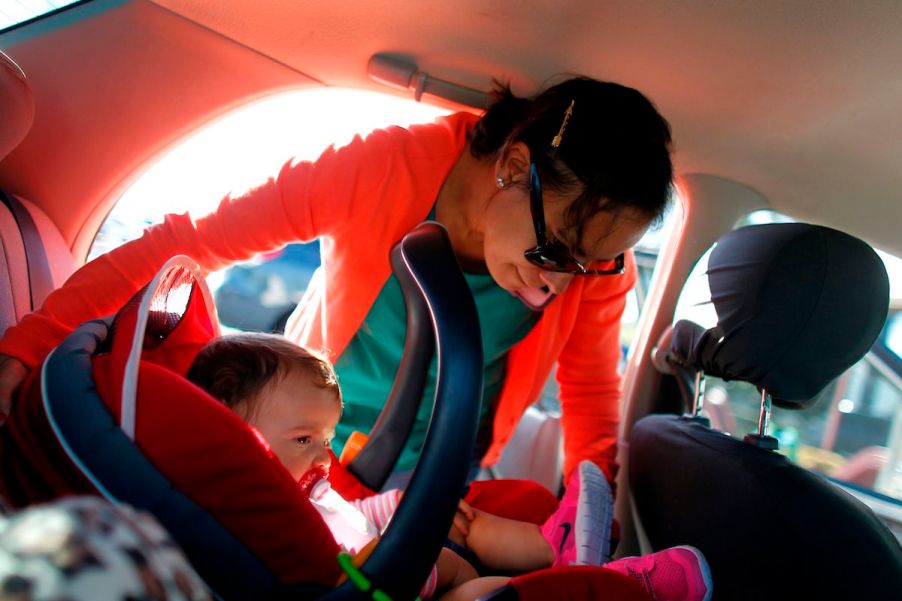
What Is the LATCH System in Cars?
Are you considering your children’s safety while car shopping? If so, you may have encountered the term “LATCH.” But do you know what it is and how this safety system works? Here’s all you need to know about the LATCH system and how it relates to children’s car safety.
The LATCH system in cars explained

First, what does “LATCH” stand for? “LATCH” is an acronym for “Lower Anchors and Tethers for Children.” According to the American Academy of Pediatrics, the LATCH system is a group of anchors and tethers designed to help vehicle owners install child safety seats. Because laws require these seats, automakers began designing the LATCH system to make it easier for caregivers to install them.
The LATCH system is optimally designed for Group 1 child safety seats. They are for children aged 0 to 4 (or up to 40 pounds), including rear-facing and convertible car seats.
The LATCH system can also be used for seats in the Group 2 category, which covers children up to 6 years or 55 pounds. However, many Group 2 seats allow a seat belt to hold them in place (as can Group 3 models, commonly known as booster seats).
Though this system is known as LATCH in the United States, it is standard in many countries. Some call it the Universal Child Safety Seat System (UCSSS).
How did the LATCH system start?
The history of the LATCH system spans several decades. Automakers had begun using tethers as far back as 1970. They became mandatory in Australia in 1974 and in Canada in 1980, Safe Ride News reports. But during that time, the U.S. government was involved in extensive testing for child restraint systems, leading to a standard that nearly eliminated the need for tethers in the United States in 1985.
However, a decade later, tethers returned to the spotlight as an International Standards Organization group of child restraint developers and automakers began designing a universal anchorage system. This standard began with ISOFix, a system involving rigid bars and attachments that European nations still use.
ISOFix evolved into the modern-day LATCH, used in the United States, Canada, and other countries. This system uses a combination of tethers and anchors, allowing child car seats to be secured with some flexibility. And though the general design is standard, not all LATCH systems are the same quality. That’s because of the differences in vehicle LATCH locations and structural differences that can affect a child’s safety seat in a crash.
Which vehicles have this car safety feature?
You probably won’t find the LATCH system advertised as a significant selling point in the latest vehicles. That’s because virtually all late-model cars have LATCH integrated into their back seats. Automakers phased the system into their models beginning in September 2002.
But if you drive a vehicle manufactured before then, you might need to buy a tether anchor retrofit kit. Some auto parts shops carry them, although you might have difficulty finding one on the shelf given how infrequently they’re needed nowadays. But you can find one online.
And if you’re looking for the safest vehicles for children, consider models with backseat monitoring systems, rear door child safety locks, rear-seat mirrors, side-impact airbags, and anti-pinch windows and tailgates, among other features. Furthermore, you’ll want a vehicle with advanced safety systems, such as automatic emergency braking with forward and rear collision warning, to mitigate the risk of collisions.


